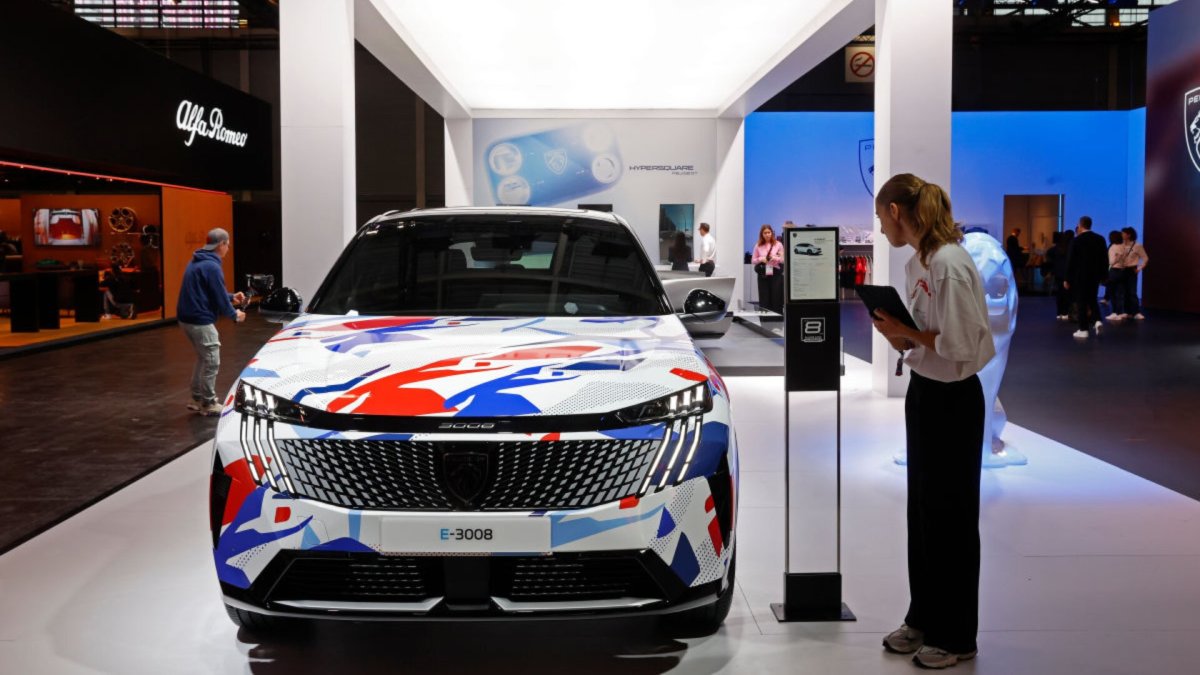While Stellantis is abandoning its plan to sell 100% EVs by 2030, the company certainly isn’t resting on its electrified laurels.
Earlier this month, multinational conglomerate Stellantis announced that it will no longer target producing only electric vehicles in Europe by 2030.
Jean-Philippe Imparato, head of Europe, also said the European Union’s carbon emissions targets for 2035 are no longer achievable for any carmaker in the region.
EU officials have targeted climate neutrality (net-zero greenhouse gas emissions) by 2050, with an interim target to reduce net greenhouse gases by 66.2% and 72.5% by 2030 compared to 1990.
Despite Stellantis’, and other car manufacturers’, insistence that the goal is too lofty, in July, the European Commission also proposed a new, more ambitious target of 90% emissions reduction by 2040.
If passed, that goal would be legally binding under the European Climate Law.
But just because Stellantis doesn’t think this is feasible doesn’t mean it is not still developing new battery technology to achieve those targets.

Image source: Chesnot/Getty Images
Stellantis debuts world’s first prototype with Intelligent Battery Integrated System
This week, Stellantis unveiled the fruits of its partnership with Saft, a new Intelligent Battery Integrated System (IBIS) that could change EVs forever.
IBIS systems embed inverter and charger functionalities directly into the battery, regardless of chemistry or application, according to Automotive World.
This build supplies electric energy directly to the motor or grid, while also supplying the vehicle’s 12V network and auxiliary systems.
Benefits of IBIS battery system for EVs include:
- Up to 10% energy efficiency improvement
- Vehicle weight reduction of 88 lbs. (40 kg), which frees up to 17 liters of volume
- 15% reduction in charging time
- Easier maintenance
Stellantis will test the first complete functional battery electric vehicle (BEV) with Integrated Battery and Inverter Technology (IBIT) — the generic term for the technology involved in IBIS — when its prototype Peugeot E-3008 hits the streets.
The battery has been tested for stationary applications since 2022.
Related: Tesla could be two years away from a huge EV range breakthrough
The Sept. 19 reveal marks the first time the battery will be tested in mobile, real-world settings.
“This project reflects our belief that simplification is innovation,” said Stellantis Chief Engineering and Technology Officer Ned Curic.
“By rethinking and simplifying the electric powertrain architecture, we are making it lighter, more efficient, and more cost-effective. These are the kinds of innovations that help us deliver better, more affordable EVs to our customers.”
Battery arms race could change EVs forever
Stellantis and Saft aren’t alone in looking for an EV breakthrough.
Japanese electronics company Panasonic says it is about two years away from building a battery that could significantly extend the driving range for its EV batteries.
The company is working on a battery that eliminates the anode (negative) side of the equation during the manufacturing stage to increase the unit’s energy density, according to a presentation to reporters.
More automotive news:
- Americans may finally see car and electronics prices fall
- Tesla will finally fix a dangerous issue on its EVs
- Ford takes drastic action to solve $5 billion a year issue
The battery will achieve a “world-leading level” of energy capacity by 2027, said Panasonic Energy Chief Technology Officer Shoichiro Watanabe, according to Reuters.
Panasonic expects its new design to free up space for more active cathode (positive) materials, including nickel, cobalt, and aluminum. This could lead to as much as a 25% increase in battery capacity without increasing the battery’s size.
The breakthrough could be especially beneficial for Tesla’s flagship Model Y. If the battery delivers what Panasonic promises, the Model Y’s driving range could increase by 90 miles.
Related: Jaguar Land Rover nightmare scenario won’t end for another week
#Stellantis #debuts #battery #design #change